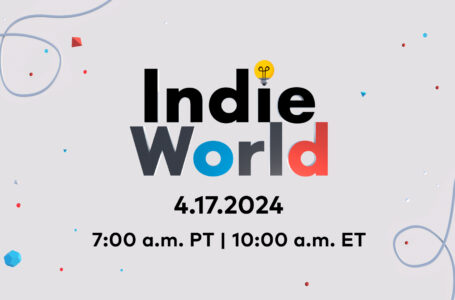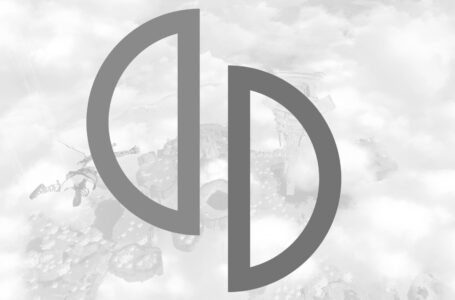Enjoying Splatoon 3? Don’t forget the series has always had a great single-player mode
I have enjoyed Splatoon ever since it first appeared on Wii U — yes, never let it be forgotten that one of Nintendo’s most successful franchises first started on one of its worst-selling consoles — for a variety of reasons. Chief among the series’ enduring appeal for many people is how it offers an enjoyable multiplayer experience with minimal toxicity thanks to the complete absence of direct communication between players. And this is once again true with the latest installment, Splatoon 3 for Switch.
But there’s an aspect of the series that, since the very beginning, has gone woefully underappreciated, to such a degree that it’s rare to see anyone talking about it. And that’s the single-player offering. I honestly believe that as well as being Nintendo’s tentpole online multiplayer franchise, Splatoon’s single-player game is also among the company’s best output, and it’s a shame it doesn’t get celebrated more often.
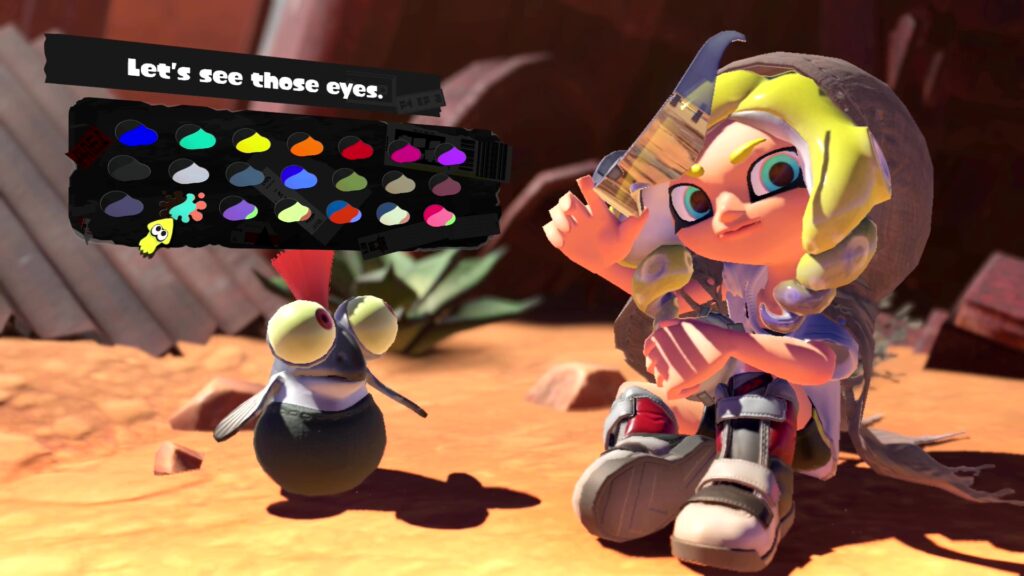
In the case of Splatoon 3, the single-player experience feels like it’s drawing together a lot of different things from earlier in the series, then wrapping them all together with a few new elements to keep things interesting. And, from my admittedly limited experience with it so far — my copy only arrived this morning, so please consider this a “first impressions” piece rather than The Last Word in Splatoon 3 Opinions — it all works beautifully well, adding Splatoon 3’s single-player mode to the list of Nintendo Games That People Don’t Talk About Enough.
Perhaps you haven’t experienced a Splatoon single-player mode before, though — perhaps because you were turned off by the idea of a multiplayer-centric game and thus decided not to pick any of the previous titles in the series up. For the benefit of those who fall into this category, then, a brief explanation.
Splatoon 3’s single-player mode sees your custom player character thrown into the role of Agent 3, an operative who has been tasked with determining what has happened to the Great Zapfish, a huge electrically charged entity that typically powers the more civilised areas of Splatoon’s post-apocalyptic world. This is now the third time the Great Zapfish has been spirited away, and naturally suspicions turn to the Octarians who were responsible for the previous two thefts.
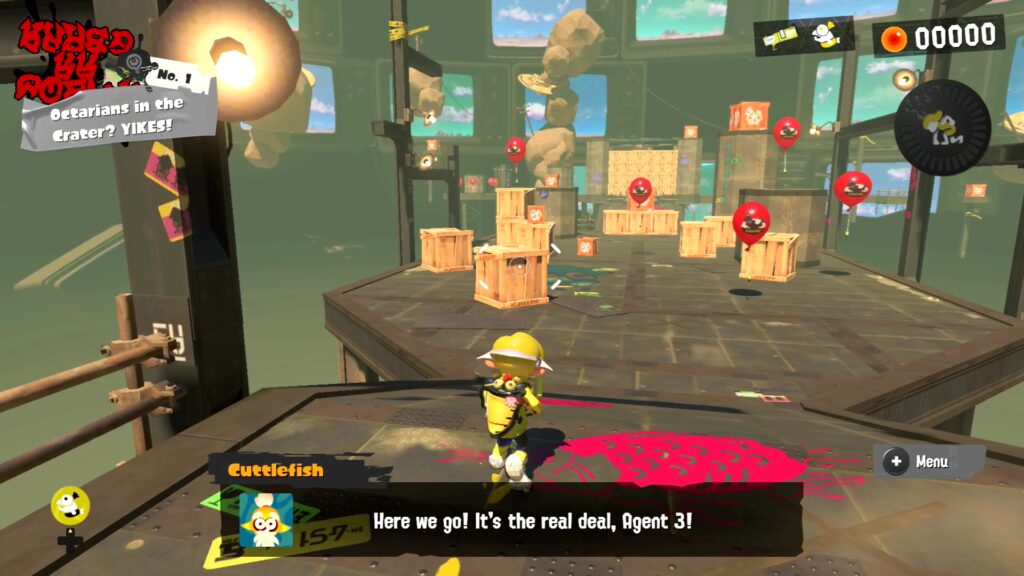
Thus, the first few levels of Splatoon 3’s single-player mode operate much like the previous two games: there’s a sort of “hub” that you work your way through gradually — and rather linearly, in this case — with various kettles (because “kettle of fish”, see) scattered around the place representing individual levels. Each level is a self-contained challenge that involves platforming, shooting and puzzle-solving, with your aim simply being to get from the start to the finish.
Along the way you’ll make use of most of the things you’ll need to learn in order to master Splatoon 3’s multiplayer — which makes the single-player mode a great place to train — but in rather different contexts to normal. You’ll often need to figure out the best means of using your various abilities to get from one place to another — for example, covering a wall with ink then “swimming” up it in order to reach platforms that you can’t get to by jumping.
After you’ve completed a few of these levels and everything all feels very similar to the previous games, you take on DJ Octavio, the final boss of the previous games. Upon his defeat, he reveals that this time around, he’s not responsible for the situation — and from here, the real Splatoon 3 begins.
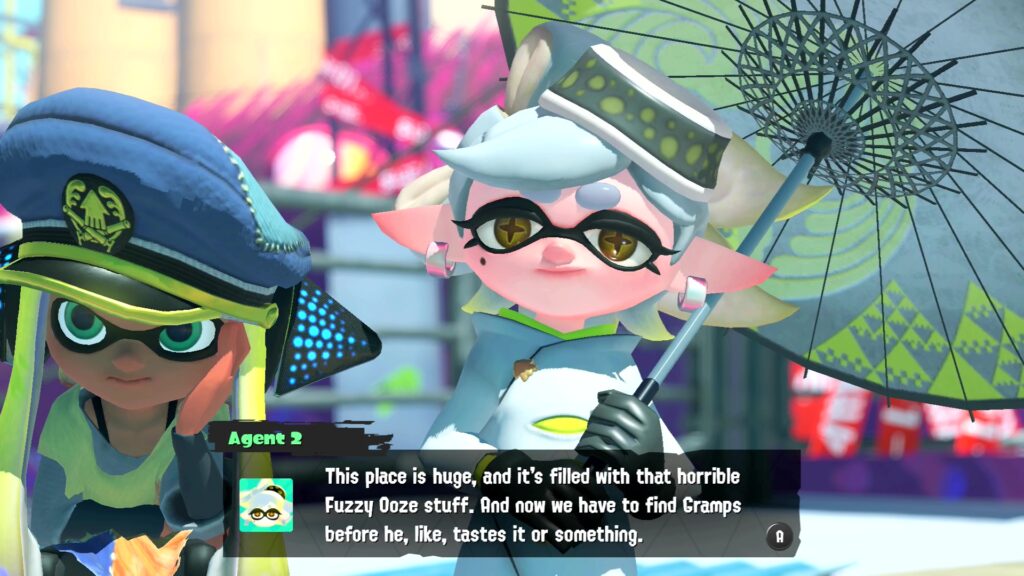
At heart, the main bulk of Splatoon 3’s single-player mode isn’t that different from the previous installments — you still have the hub world and the kettles to dive into various challenges, for example. The main difference is that the hubs feel a lot more “open” than in previous games, encouraging exploration in order to locate hidden items that can have various effects. Some are purely decorative and can be placed in your in-game locker, but others are collectible cards for playing a game, and others still allow you to upgrade your abilities in single-player mode.
The hidden objects around the hub worlds appear to have taken the place of the optional collectibles found in the stages themselves in the previous Splatoon games, and honestly, this is probably a move for the better. While it was fun figuring out the devious ways in which the items were hidden in the previous games — it usually involved creative manipulating of the camera to see bits of the level you wouldn’t normally look at — getting obsessive about collectibles could easily drag the pace of the game right down.
In Splatoon 3, meanwhile, while you’re in a level, your focus is entirely on completing what’s expected of you in the stage, with all the hunting around for hidden things coming between the more focused parts of the experience. This structure works well, particularly as many of the levels this time around are designed to be a lot shorter and snappier, often involving a single tricky challenge rather than a lengthy series of checkpoints to traverse.
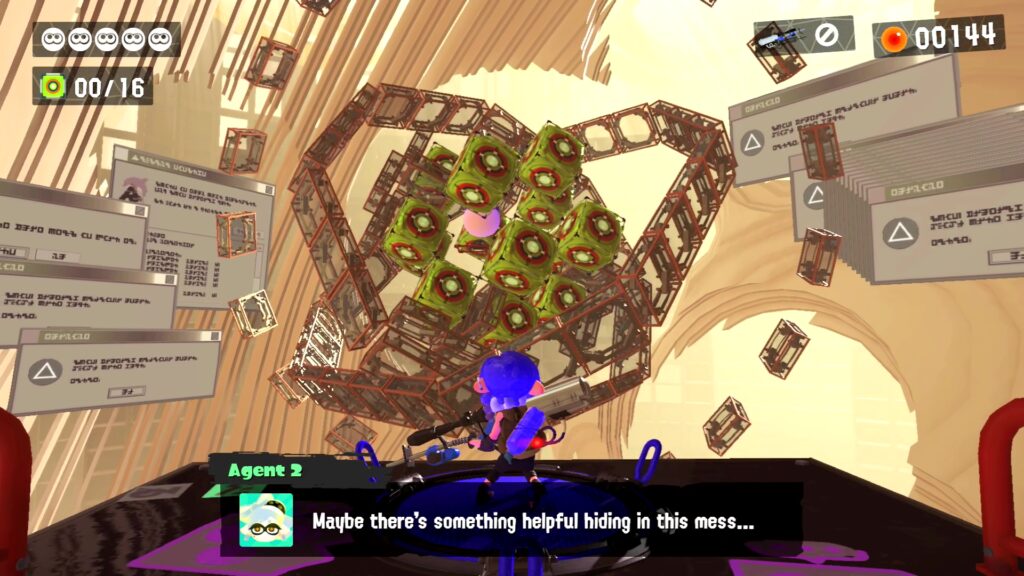
In many respects, Splatoon 3’s single-player levels seem to have taken some heavy inspiration from Splatoon 2’s excellent Octo Expansion in that they often test specific skills rather than simply providing you with an assault course to conquer.
One early stage, for example, tasks you with accurately using a Charger weapon — Splatoon’s equivalent of a sniper rifle — to eliminate all targets using a single shot. It might initially sound impossible, but if you’ve been paying attention you’ll figure it out pretty quickly — and that’s all that stage expects of you. Another tasks you with using the delightfully fun new “zipcast” extendible arms to grapple your way around the stage in a completely different way to moving on foot.
Powering up your character in single-player mode has also had a bit of a revamp. The orange “eggs” you collect as you traverse the levels are now primarily use to eliminate the hairy ooze that blocks access to various parts of the hub worlds, and upgrading your abilities involves a combination of earning experience through combat, completing stages and simply spreading ink everywhere, and finding hidden “Sardinium” items to unlock sections of a skill tree.
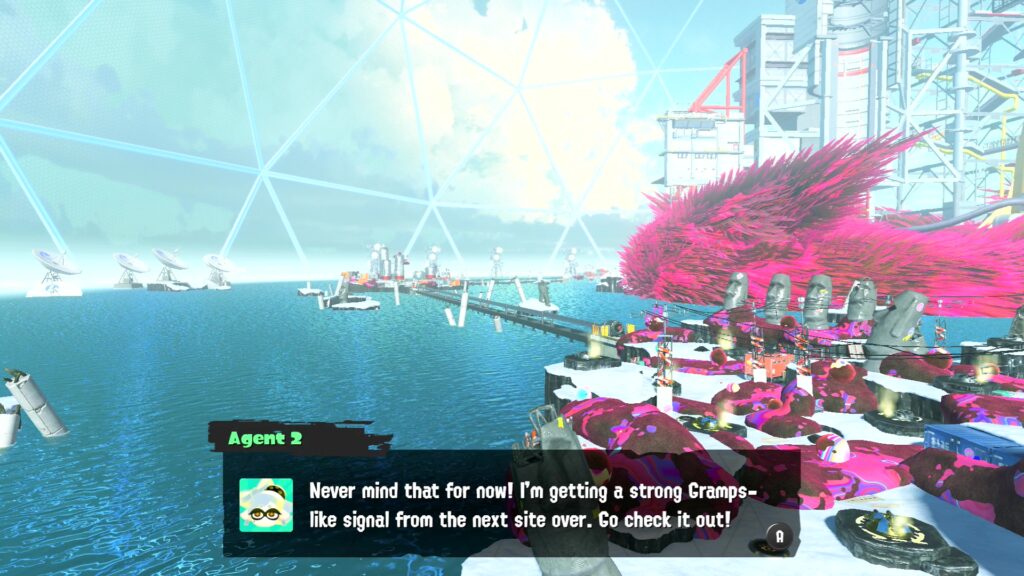
The skill tree gives the impression that there will be a certain amount of character customisation, but in practice you’re simply choosing which abilities you want to unlock first; by the end of Splatoon 3’s single-player mode you’ll have unlocked all of them. It’s still a nice touch, though, allowing you to prioritise the passive abilities that complement your play style first before coming back to clean up the remaining nodes.
It might initially feel like you’ll need to “grind” to unlock all these skills, but after completing a level or two you’ll see that skill points are pretty easy to come by, so simply playing the game normally will allow you to progress. The main roadblocks along the way will be the Sardinium, of which there are only a few hidden in each of the hub world’s “sites”, so at times you’ll need to make your way to the next area in order to continue your character’s progression.
All in all, Splatoon 3’s single-player mode hasn’t disappointed so far, and I anticipate it’s going to be a fun experience for the few hours it will probably last, going by my experiences with the previous games. It’s perhaps not as substantial as a Nintendo game designed entirely for the single player such as Super Mario Odyssey — but if you’ve typically shied away from Splatoon on the assumption that it’s a multiplayer-only affair, I’d encourage you to give the single-player mode a shot.
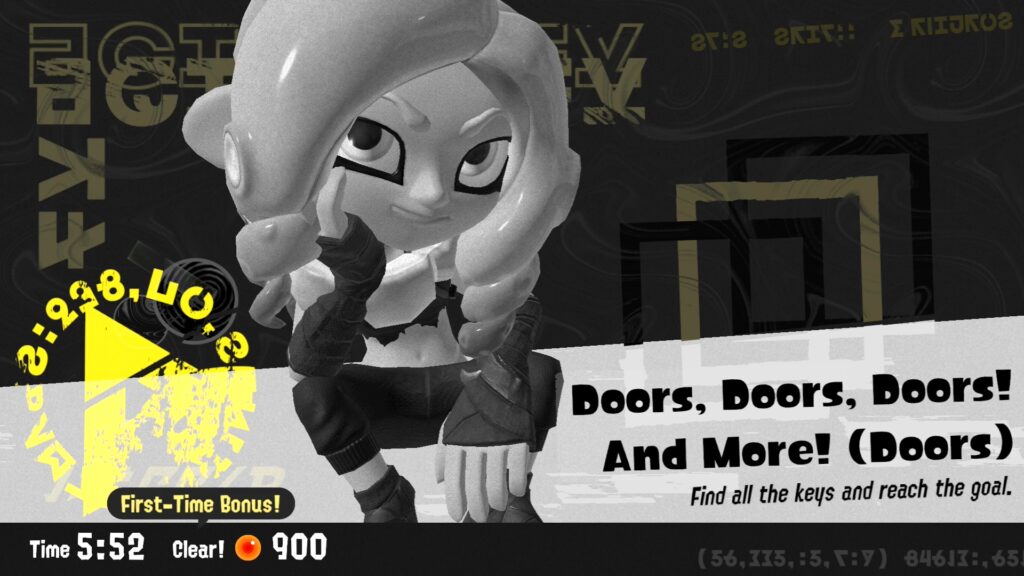
Who knows? You might even find yourself with enough confidence to take the battle online after saving the day. And then you can really enjoy the game to the fullest!
Splatoon 3 is out now for Nintendo Switch both physically and digitally.
Join The Discussion
Rice Digital Discord
Rice Digital Twitter
Rice Digital Facebook
Or write us a letter for the Rice Digital Friday Letters Page by clicking here!
Disclosure: Some links in this article may be affiliate links, which means we may earn a small commission if you make a purchase after clicking on them. This is at no additional cost to you and helps support Rice Digital!
- Letter from the Editor: passing the torch - June 30, 2023
- Super Woden GP 2 is looking promising - June 30, 2023
- Inti Creates is making a 32 bit-style Love Live action platformer - June 26, 2023




